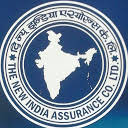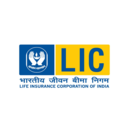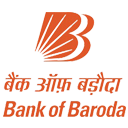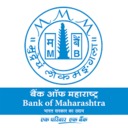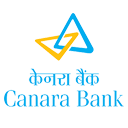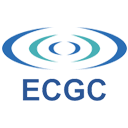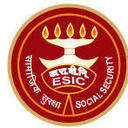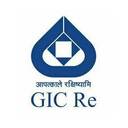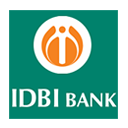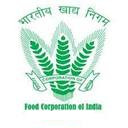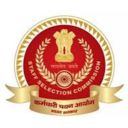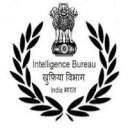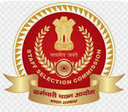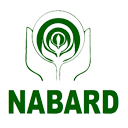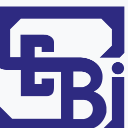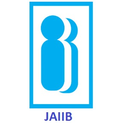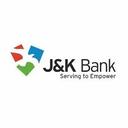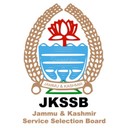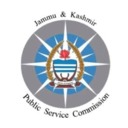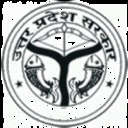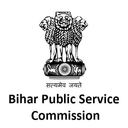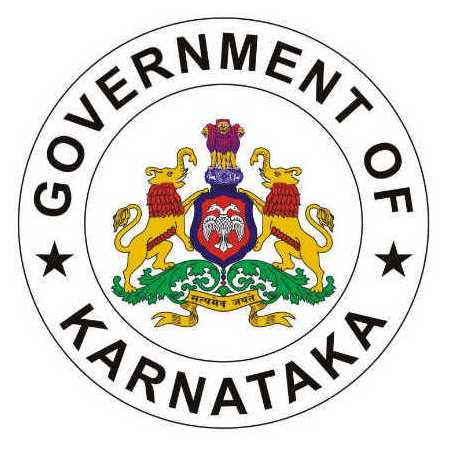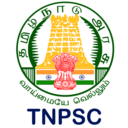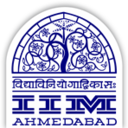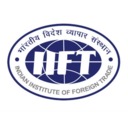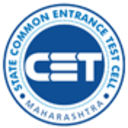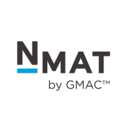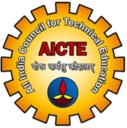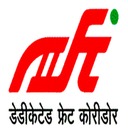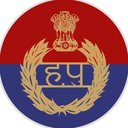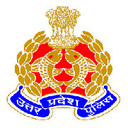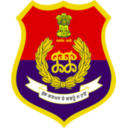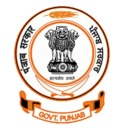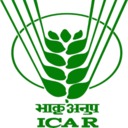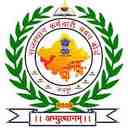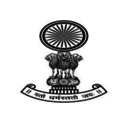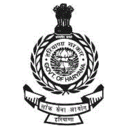CAIIB Syllabus 2025: The Indian Institute of Banking & Finance (IIBF) conducts the CAIIB 2025 exam to help banking professionals grow in their careers. The exam includes a total of five papers, four are compulsory, and one is elective, which candidates can choose according to their interest. Before starting their preparation, candidates should go through the detailed syllabus for all five papers.
In this blog, we have shared the complete CAIIB 2025 syllabus, including subject-wise details for both the compulsory and elective papers, for the November–December session, which is scheduled to start on 30th November 2025.
What are the Subjects of the CAIIB 2025 Exam?
The CAIIB exam consists of a total of 5 papers, with 4 compulsory papers ABM, BFM, ABFM, and BRBL along with one elective paper based on the choice of the aspirant. The details of the papers are as follows:
| Paper Type | Details |
|---|
| Compulsory Papers | Advanced Bank Management (ABM) Bank Financial Management (BFM) Advanced Business & Financial Management (ABFM) Banking Regulations and Business Laws (BRBL) |
| Elective Papers (Choose Any One) | Rural Banking Human Resources Management Information Technology & Digital Banking Risk Management Central Banking |
Key Guidelines for Choosing CAIIB 2025 Elective Papers
The CAIIB 2025 exam provides candidates the flexibility to choose one elective paper in addition to the four compulsory papers. This elective allows professionals to align their exam preparation with their job role, area of expertise, or future career aspirations. Making the right choice is important as it not only helps in clearing the exam with confidence but also contributes to practical knowledge and career growth.
- Exemptions: No exemptions are provided for any subject, even if candidates hold higher qualifications.
- Elective Selection: Candidates should select an elective based on their current work profile or long-term career interests.
- Recommendation: Opting for an elective connected to the present role ensures better understanding, smoother preparation, and skill enhancement.
- Flexibility: Candidates have the option to change their elective paper in future attempts if required.
CAIIB Syllabus 2025
The CAIIB 2025 Syllabus consists of 5 papers, including 4 compulsory papers and 1 elective paper. The detailed breakdown of the CAIIB 2025 syllabus is provided below:
| Paper Name | Key Focus Areas |
|---|
| Advanced Bank Management (ABM) | Economic Analysis, Business Mathematics, Human Resource Management, and Credit Management. |
| Bank Financial Management (BFM) | International banking, Risk Management, Treasury Management, and Balance Sheet Management. |
| Advanced Business & Financial Management (ABFM) | Business strategy, Leadership and Ethics, Financial Management, and Valuation and Mergers. |
| Banking Regulations & Business Laws (BRBL) | Regulations and Compliance, Important Acts, Commercial Laws, and Business Laws and Regulations for Banking. |
Take a Free CAIIB Mock Test Now
CAIIB Elective Papers (Choice Based) Syllabus
There are some elective papers as well for CAIIB. We have mentioned the detailed CAIIB Syllabus for elective papers below:
| Elective Paper | Modules |
|---|
| CAIIB Elective Paper 1: Rural Banking | Module A: Rural India Module B: Financing Rural Development Module C: Priority Sector Financing & Government Initiatives Module D: Problems and Prospects in Rural Banking |
| CAIIB Elective Paper 2: Human Resource Management (HRM) | Module A: Human Resource Management Module B: Building an HR Strategy Module C: Motivation, Training & Skill Development Module D: Personnel Management & Industrial Relations Module E: Emerging Scenario in HRM |
| CAIIB Elective Paper 3: IT and Digital Banking | Module A: Introduction to Information Technology Module B: Systems and Design Module C: Banking Technology Applications & Digital Banking Module D: Information System Security Controls & Audit |
| CAIIB Elective Paper 4: Risk Management | Module A: Risk & Risk Management Framework Module B: Credit Risk Module C: Market Risk Module D: Operational Risk Module E: Basel & RBI Guidelines Module F: Derivatives & Risk Management |
| CAIIB Elective Paper 5: Central Banking | Module A: Rationale and Functions of Central Bank Module B: Central Banking in India Module C: Monetary and Credit Policies Module D: Forex Reserves & Indian Financial Market Module E: Regulation, Supervision & Financial Stability Module F: NBFCs and Primary Dealers Appendix |
CAIIB Exam Pattern 2025
The CAIIB Exam Pattern, as prescribed by the Indian Institute of Banking and Finance (IIBF), consists of a total of five papers, four compulsory papers (ABM, BFM, ABFM, and BRBL), each conducted separately with 100 questions for 100 marks and a duration of 2 hours, and one elective paper, which candidates can choose based on their area of work or personal preference, also conducted with 100 questions for 100 marks and a duration of 2 hours. The details of the CAIIB exam structure are as follows:
| Paper Name | Total Marks | Exam Duration | Passing Marks |
|---|
| Advanced Bank Management (ABM) | 100 | 2 Hours | 50 (or 45 with 50% aggregate) |
| Bank Financial Management (BFM) | 100 | 2 Hours | 50 (or 45 with 50% aggregate) |
| Advanced Business & Financial Management (ABFM) | 100 | 2 Hours | 50 (or 45 with 50% aggregate) |
| Banking Regulations & Business Laws (BRBL) | 100 | 2 Hours | 50 (or 45 with 50% aggregate) |
| Elective Paper (Any One) | 100 | 2 Hours | 50 (or 45 with 50% aggregate) |
CAIIB Marking Scheme
The Certified Associate of Indian Institute of Bankers (CAIIB) exam follows a structured marking scheme as per IIBF guidelines. Below is the detailed breakdown:
- Total Papers: 5 (4 compulsory + 1 elective)
- Total Marks per Paper: 100 Marks
- Number of Questions: 100 (Objective Type)
- Marking System: 1 mark per correct answer
- Negative Marking: No negative marking
- Exam Duration: 2 Hours (120 Minutes) per paper
Attempt CAIIB Previous Year Papers
What is the CAIIB ABM syllabus?
The CAIIB Advanced Bank Management syllabus is divided into four modules: Module A: Statistics, Module B: Human Resource Management, Module C: Credit Management, and Module D: Compliance in Banks & Corporate Governance. Further details of the subtopics under the syllabus are as follows:
| Module | Unit / Sub-Topic | Details (Simple & Easy Words) |
|---|
| Module A: Statistics | Basics of Statistics | Meaning, Importance, Functions, Limitations, Data Collection, Classification, Tabulation, Frequency Distribution |
| Sampling Techniques | Random Sampling, Normal & Non-Normal Populations, Sampling Distribution, Central Limit Theorem, Finite Population Multiplier |
| Measures of Central Tendency & Dispersion | Arithmetic Mean, Combined Mean, Geometric Mean, Harmonic Mean, Median, Quartiles, Mode, Range, Quartile Deviation, Standard Deviation, Coefficient of Variation, Skewness, Kurtosis |
| Correlation & Regression | Scatter Diagram, Correlation, Regression, Standard Error of Estimate |
| Time Series | Variations in Time Series (Trend, Cyclical, Seasonal, Irregular), Forecasting Techniques |
| Probability Theory | Probability Definition, Conditional Probability, Random Variable, Probability Distributions (Binomial, Poisson, Normal), Expectation & SD, Credit Risk, Value at Risk, Option Valuation |
| Estimation | Estimator & Estimates, Point Estimates, Interval Estimates, Confidence Intervals for Mean & Proportion (Large Samples) |
| Linear Programming | Graphic Method, Simplex Method |
| Simulation | Simulation Methods & Exercises |
| Module B: Human Resource Management | Fundamentals of HRM | HRM vs HRD, Structure & Functions, Role of HR Professionals, Strategic HRM, Development of HR in India |
| Human Resource Development (HRD) | HRD Subsystems, Learning & Development, Attitude Building, Career Planning, Self-Development, Talent Management, Succession Planning |
| Human Behaviour in Organisations | Employee Behaviour, Individual Differences, Workplace Diversity, Gender Issues, Motivation Theories & Practical Uses, Role Analysis |
| Employee Feedback & Rewards | Feedback Systems, Reward & Compensation System |
| Performance Management | Appraisal Methods, Review & Feedback, Counselling, Competency Mapping, Assessment Centres, Behavioural Event Interview (BEI) |
| Conflict Management & Negotiation | Meaning, Features, Types, Causes, Phases of Conflict, Conflict Resolution, Negotiation Skills |
| HR & Technology | IT in HR, HRIS, HRMS, e-HRM, HR Research, Knowledge Management, Technology in Training, HR Analytics |
| Module C: Credit Management | Overview of Credit | Importance, History in India, Principles of Credit, Types of Borrowers & Credit, RBI Guidelines |
| Financial Statement Analysis | Balance Sheet, P&L, Cash Flow, Funds Flow, Projected FS, Rearranging FS for Bankers, Accounting Standards, Creative Accounting, Related Party Transactions, Techniques of Analysis |
| Working Capital Finance | Concept, Cycle, Liquidity Ratios, Assessment Methods, IT/Software Industry Finance, Bills/Receivables Finance, RBI Guidelines, TReDS, Non-Fund Based Limits |
| Term Loans & Project Finance | Term Loans, Project Appraisal, DPGs, Infrastructure Financing |
| Credit Delivery & Processing | Documentation, Guarantees, Charge on Securities, Loan Disbursal, Consortium/Multiple Banking, Syndicated Loans, Straight-Through Processing |
| Credit Monitoring & Control | Tools, Loan Review Mechanism (LRM) |
| Credit Risk & Credit Rating | Meaning, Factors, Mitigation, Internal & External Ratings, Methodology, Credit Derivatives, RBI Guidelines, Credit Information System |
| Restructuring & Recovery | NPAs, Stressed Assets, Wilful Defaulters, Non-Cooperative Borrowers, RBI Guidelines, Restructuring Options, Sale of Assets |
| Insolvency & Bankruptcy Code (IBC) 2016 | Definition, Applicability, Legal Provisions, Corporate Insolvency Resolution, Liquidation, Pre-Pack for MSMEs |
| Module D: Compliance & Corporate Governance | Compliance in Banks | Compliance Policy, Principles, Process, Programme, Role of Chief Compliance Officer (CCO) |
| Compliance Audit | Risk-Based Internal Audit, Monitoring, Reporting, SEBI Listing Disclosures, Accounting Standards |
| Governance Structure for Compliance | Board & Senior Management Role, Compliance at Corporate & Field Levels, Importance of Internal Controls |
| Framework for Compliance Risks | Compliance Issues, Risks, Inherent & Control Risks, Audit Programmes, Loan Review/Credit Audit, Good Compliance Practices |
| Compliance Culture & GRC | Building Compliance Culture, GRC Framework, Benefits, Whistle-blower Policy, Reasons for Compliance Failures |
| Compliance in NBFCs | Scale-Based Regulation, Compliance Framework & Role of CCO in NBFC-UL & NBFC-ML |
| Fraud & Vigilance in Banks | Meaning of Fraud & Forgery, Types of Bank & Cyber Frauds, Reporting System, Vigilance Function, RBI Guidelines (Private & Foreign Banks) |
Check out the detailed CAIIB ABM Syllabus
What is the CAIIB BFM syllabus?
The CAIIB Bank Financial Management syllabus is structured into four modules: Module A: International Banking, Module B: Risk Management, Module C: Treasury Management, and Module D: Balance Sheet Management. Further details of the subtopics under the syllabus are as follows:
| Module | Unit / Sub-Topic | Details (Simple & Easy Words) |
|---|
| Module A: International Banking | Exchange Rates & Forex Business | Meaning of Foreign Exchange, Forex Markets, Factors affecting Exchange Rates, Exchange Rate Mechanism, Forex Dealing Room, Derivatives, RBI/FEDAI Guidelines, Forex Arithmetic (concepts & examples) |
| Liberalised Remittance Scheme (LRS) & Remittances | Capital vs Current Account Transactions, FEMA Provisions, Permitted & Non-permitted Remittances, Operational Guidelines, TCS, Reporting under LRS |
| Correspondent Banking & NRI Accounts | Correspondent Banking Services, Nostro/Vostro/Loro Accounts, SWIFT, CHIPS, CHAPS, RTGS, NRI Banking – Rupee & FC Accounts, Loans & Facilities to NRIs |
| Documentary Letters of Credit (LCs) | Definition, Types, Operations, UCP 600, Rights & Liabilities of Parties, Document Scrutiny, Crystallisation, Safeguards, Risks, Standby LC, URR-725, ISBP 745, Incoterms, Case Studies |
| Facilities for Exporters & Importers | RBI/Exchange Guidelines, Export Finance, Gold Card Scheme, EDPMS, Factoring, Forfaiting, Import Finance, IDPMS, Trade Credit (Supplier's & Buyer's Credit), Case Studies |
| ECBs & Foreign Investments | External Commercial Borrowings – Concepts, Reporting, Conversion into Equity; Foreign Investments – Investors, Entities, Instruments, Prohibited Sectors, Pledge of Shares, Operational Guidelines, NDI Rules, Documentation |
| Risks in Foreign Trade & ECGC | Types of International Trade Risks, Country Risk, Role of ECGC, ECGC Policies, Products for Banks, Safeguards, Claims |
| Role of EXIM Bank, RBI, FEMA, FEDAI | Role of EXIM Bank, RBI's Exchange Control Regulations, FEMA 1999, FEDAI Functions & Rules, ADR/GDR/FCCB overview |
| International Financial Service Centres (IFSC), GIFT City | Scope, Opportunities, Guidelines for IFSC Banking Units (IBUs), Role of IFSCA, Regulatory Framework, Permissible Activities, Relaxations for FPIs |
| | Technology in International Banking | Digitalisation in International Banking, Benefits & Limitations, FinTech Platforms, Delivery Channels, Blockchain in Trade Finance, Challenges in FinTech |
| Module B: Risk Management | Risk Basics & Framework | What is Risk, Link between Risk–Capital–Return, Why Risk Management, Basic Risk Management Framework |
| Banking Risks | Identification of Risks, Banking Book vs Trading Book, Off-Balance Sheet Exposures, Types of Banking Risks |
| Risk Regulations (Basel Norms) | Need for Risk-based Regulation, Basel I (1988), 1996 Amendment (Market Risk), Basel II – Goals, Pillars (Credit, Market, Operational Risk, Supervisory Review, Market Discipline), Basel III (Capital Buffers, Leverage Ratio, SIFIs), Risk Based Supervision |
| Market Risk | Meaning, Market Risk in Banks, Framework, Structure, Risk Identification, Measurement, Monitoring, Reporting, Liquidity Risk in Trading, Mitigation |
| Credit Risk | Framework, Structure, Risk Identification, Measurement, Policies, Monitoring at Transaction & Portfolio Levels, Loan Review Mechanism, Mitigation, Securitisation, Credit Derivatives |
| Operational Risk & Integrated Risk Management | Types of Operational Risks, Event Types, Risk Practices, Structures & Processes, Monitoring & Controls, Mitigation, Scenario Analysis, Need & Challenges of Integrated Risk Management |
| Liquidity Risk Management | Importance, Drivers, Types of Liquidity Risk, Governance, Strategies, Stress Testing, Contingency Funding, Overseas Branches, MIS, RBI Reporting, Internal Controls |
| Basel III Liquidity Standards | Liquidity Coverage Ratio (LCR), Net Stable Funding Ratio (NSFR), Liquidity Monitoring Tools |
| Module C: Treasury Management | Introduction | Meaning of Treasury Management, Functions, Role of Globalisation, Treasury as Profit Centre, Organisation of Treasury |
| Treasury Products | Forex Products, Money Market Instruments, Securities Market Products, Domestic & Global Markets |
| International Equity & Debt Products | Regulatory Environment, GDRs, IDRs, ECBs, Trade Credits, Masala Bonds (Rupee Denominated Bonds) |
| Funding & Regulatory Aspects | CRR, SLR, Liquidity Adjustment Facility (LAF), Payment & Settlement Systems |
| Treasury Risk Management | Supervision & Control, Market & Credit Risk, Risk Measures (VaR, Duration), Use of Derivatives in Risk Management |
| Derivative Products | OTC & Exchange Traded Derivatives, Forwards, Options, Futures, Swaps, Interest Rate & Currency Swaps, RBI Guidelines, Indian Market Developments |
| Treasury & ALM | Asset-Liability Management (Liquidity & Interest Rate Risk), Treasury Role in ALM, Derivatives in ALM, Credit Derivatives, Transfer Pricing, Policy Framework |
| Module D: Balance Sheet Management | Assets & Liabilities | Bank's Balance Sheet Components, Asset-Liability Management (ALM) – Purpose, Objectives, Coordinated Balance Sheet Management |
| Capital Adequacy & Basel Norms | Basel Pillars – Minimum Capital (Pillar 1), Supervisory Review (Pillar 2), Market Discipline (Pillar 3) |
| Asset Classification & Provisioning | RBI Norms for Asset Classification, Provisioning Guidelines |
| Liquidity Management | Definition, Dimensions, Role in Risk Management, Measuring & Managing Liquidity Risk |
| Interest Rate Risk Management | Sources & Effects of Interest Rate Risk, Measurement Techniques, Strategies & Controls, RBI's Draft Guidelines on IRR in Banking Book |
| RAROC & Profit Planning | Profit Planning, Risk Aggregation, Capital Allocation, Economic Capital, RAROC (Risk Adjusted Return on Capital) |
Check out the detailed CAIIB BFM Syllabus
What is the CAIIB ABFM syllabus?
The CAIIB Advanced Business & Financial Management (ABFM) syllabus is divided into four modules: Module A: The Management Process, Module B: Advanced Concepts of Financial Management, Module C: Valuation, Mergers & Acquisitions, and Module D: Emerging Business Solutions. Further details of the subtopics under the syllabus are as follows:
| Module | Topics Covered |
|---|
| Module A: The Management Process | Basics of Management – Definition, Process, Functions, Importance, Thoughts & Approaches, Challenges & Opportunities, Strategic Management, Business Environment Analysis Planning – Fundamentals, Steps, Importance, Pros & Cons, MBO, Plan Components, Contingency Planning, Forecasting & Decision Making Organizing – Fundamentals, Importance, Stages, Principles, Types of Organisations, Structure, Charts, Manuals, Culture, Authority & Responsibility, Issues in Structure, Change, Conflict Dynamics Staffing – Functions, Objectives, Nature, System Approach, Recruitment, Selection, Training, Retention, Development, Knowledge & Learning, Performance Appraisal, HRD Directing – Characteristics, Importance, Elements, Leadership, Motivation, Communication, Supervision Controlling – Basics, Characteristics, Advantages, Limitations, Types, Process, Planning-Controlling Link, Techniques, IT in Control |
| Module B: Advanced Concepts of Financial Management | Sources of Finance & Financial Strategies – Equity, Internal Accruals, Preference Capital, Term Loans, Debentures, Alternative Financing Strategies Financial & Operating Leverages – Financial Leverage, DFL, Operating Leverage, DOL, Combined Leverage Capital Investment Decisions – Objectives, Estimation of Cash Flows, Forecasting, Budget Relationships, Cash Forecasts, Cost Analysis, Appraisal Methods, SCBA International Capital Budgeting – Foreign Investment Analysis, Cash Flows, Discount Rates, Portfolio Investment, Exchange & Country Risk, CAPM, APT, Overseas Project Evaluation, Transfer Pricing Impact Risk & Uncertainty in Capital Budgeting – Sensitivity, Scenario, Hillier, Simulation, Decision Tree, Corporate Risk, Project Selection under Risk Decision Making – CVP Analysis, Relevant Costing, ABC Costing, Ethical & Non-Financial Considerations |
| Module C: Valuation, Mergers & Acquisitions | Corporate Valuations – Approaches, Adjusted Book Value, Stock & Debt, Comparison, DCF Approach DCF Valuation – Inputs, Models, Dividend Discount Model, Applicability Other Valuation Models – Relative Valuation, Equity Multiples, EV Multiples, Book Value, Stock & Debt Approach Special Cases – Intangibles, Startups, Distressed Firms, Service Companies, Holding Cos., E-commerce, Warrants, Convertibles Mergers & Acquisitions – Types, Reasons, Mechanics, Costs/Benefits, Exchange Ratio, Takeovers, LBOs, Alliances, Divestitures, Demergers Deal Structuring & Strategies – Negotiations, Legal & Tax Aspects, Reporting, Financing, Cross-border Acquisitions |
| Module D: Emerging Business Solutions | Hybrid Finance – Types, Warrants, Convertibles, FCCBs, Mezzanine, Innovative Hybrids Start-up Finance – Benefits, Challenges, Policies, Pitching, Funding, Schemes, Tax Exemptions, Investor Outlook Private Equity & Venture Capital – Characteristics, Financing Options, Benefits, Drawbacks, Due Diligence, Exit Strategies Artificial Intelligence – History, Applications in BFSI, Neural Networks, Tools, Rational Agents, Ethics & Morality Business Analytics – Essentials, Types, Elements, Big Data, Web vs Mobile Analytics, Importance Green & Sustainable Financing – ISO Standards, Best Practices, India's Policies, Challenges, RBI View SPACs – Advantages, Disadvantages, Structure, Process, Stakeholders, De-SPAC Process |
Check out the detailed CAIIB ABFM Syllabus
What is the CAIIB BRBL syllabus?
The CAIIB Banking Regulations and Business Laws (BRBL) syllabus is structured into four modules: Module A: Regulations and Compliance, Module B: Important Acts/Laws & Legal Aspects of Banking Operations, Module C: Business Laws, and Module D: Commercial and Other Laws with reference to Banking Operations. Further details of the subtopics under the syllabus are as follows:
| Module | Topics Covered |
|---|
| Module A: Regulations and Compliance | Regulation of Banks – Business of Banking Companies, Control over Management, Minimum Capital, Cash Reserves, Licensing of Banking Companies, Branch Licensing Policy, Mergers & Amalgamations, Regulatory Restrictions on Loans and Advances, Priority Sector Lending, RBI Act, CRR, SLR, Provisions of Payment and Settlement Systems Act, NPA Management, Basel Norms Compliance Function in Banks – Need, Scope, Structure, Role of CCO, Compliance with Laws/Regulations, Risk Management, Fraud Risk Management, Importance of Corporate Governance, Whistleblower Policy |
| Module B: Important Acts/Laws & Legal Aspects of Banking Operations | Banking Regulation Act, 1949 – Important Provisions, Licensing, Branch Expansion, Shareholding, Management Control Reserve Bank of India Act, 1934 – Functions of RBI, Monetary Policy, Supervision & Control Negotiable Instruments Act, 1881 – Characteristics, Types of Instruments, Parties, Endorsements, Holder/Holder in Due Course, Dishonour & Noting, Crossing, Bouncing of Cheques, Penalties The Bankers' Books Evidence Act, 1891 – Provisions, Bank Records as Evidence The Prevention of Money Laundering Act, 2002 – Definitions, Obligations of Banking Companies, RBI Guidelines, KYC/AML Norms |
| Module C: Business Laws | Indian Contract Act, 1872 – Essentials of a Valid Contract, Offer & Acceptance, Consideration, Capacity, Free Consent, Void Agreements, Performance, Breach, Remedies Indian Partnership Act, 1932 – Types of Partnerships, Registration, Relations of Partners, Dissolution, Rights & Liabilities Limited Liability Partnership Act, 2008 – Nature, Incorporation, Partners & Designated Partners, Liabilities, Conversion into LLP, Winding Up Companies Act, 2013 – Definition & Types of Companies, Incorporation, MOA, AOA, Prospectus, Share Capital, Directors, Meetings, Dividend, Audit, Investigation, Winding Up |
| Module D: Commercial and Other Laws with reference to Banking Operations | Transfer of Property Act, 1882 – Mortgage, Charge, Sale, Lease, Gift, Actionable Claim The Sale of Goods Act, 1930 – Formation of Contract, Conditions & Warranties, Transfer of Ownership, Rights of Unpaid Seller Indian Partnership Act, 1932 (Banking Relevance) – Banker's Rights, Lending to Partnership Firms Indian Trusts Act, 1882 – Duties & Liabilities of Trustees, Rights & Powers Information Technology Act, 2000 – Legal Recognition of Electronic Records, Digital Signatures, Cybercrimes, Penalties Consumer Protection Act, 2019 – Consumer Rights, Grievance Redressal, Role of Ombudsman, Applicability in Banking Sector |
Check out the detailed CAIIB BRBL Syllabus
CAIIB Elective Paper 1 Rural Banking Syllabus
The CAIIB Elective Paper Rural Banking syllabus is divided into four modules: Module A: Rural India, Module B: Financing Rural Development, Module C: Priority Sector Financing and Government Initiatives, and Module D: Problems and Prospects in Rural Banking. The detailed syllabus are as follows:
| Module | Topics Covered |
|---|
| Module A: Rural India | Demographic Features – Population, Literacy, Sixth Economic Census, Agriculture Census, Socio-Economic Development Indicators, Health, Nutrition, Education, Rural-Urban Migration Characteristics of Rural Society – Social Stratification, Local Institutions, NIRD & PR Economic Features – Agriculture, Non-Farm Activities, GDP & GVA, Rural Money Markets (Formal & Informal), Rural Indebtedness, Rural Poverty, Poverty Line Measurement Methods, Sustainable Development Goals Infrastructure – Transport, Markets, Rural Electrification, Other Services Agriculture Economy – Structure & Characteristics of Indian Agriculture, Role in Economic Development, Agriculture-Industry Linkage, Issues & Constraints, Technical Change, Emerging Issues, NMSA Rural Development Policies – Schemes, Skill Development, SPMRM, Backward Area Programs, Dryland Farming, Soil & Water Conservation, RIDF, Reforms & Impact on Rural Economy Issues Concerning Rural Areas – Components & Approaches to Rural Development, Sustainable Development, Rural Management Issues, Marketing Management, Importance of Agricultural Prices |
| Module B: Financing Rural Development | Regulation of Rural Financial Services – Setup of RFIs, Role of RBI & NABARD, Lead Bank Scheme Rural Credit Institutions – Cooperative Credit, RRBs, Commercial Banks, Other Institutions, ICT Role, Inclusive Growth Initiatives, Rural & Micro Insurance, MFIs, Business Facilitators & Correspondents Financing Agriculture & Allied Activities – Crop Loans, Kisan Credit Card, NABARD Refinance, Relief in Natural Calamities, Term Loans for Allied Activities, Credit for Sectors (Plantations, Dairy, Poultry, etc.), Advances against Gold Financing Rural Non-Farm Sector – Importance, Structure, Growth, Issues, Traditional Industries, Raw Material, Marketing, Institutional Finance, Technology Development & Training SME Finance – Definition & Importance, MSME Credit, Loan Appraisal, SIDBI Role, RBI & GOI Policies, MSME Problems, Delayed Payments, PCRS, Revival & Rehabilitation Framework Project Concepts & Bankable Projects – Project Cycle, Irrigation, Farm Mechanization, Plantation, Dairy, Poultry, Sericulture, Pisciculture, Beekeeping, Rural Godowns, Mushroom Cultivation |
| Module C: Priority Sector Financing & Govt. Initiatives | Priority Sector Lending – Evolution, Guidelines, Categories, Targets, Common Guidelines, Credit Achievement Poverty Alleviation Programs – Govt. Initiatives, Features of Schemes, Welfare Programs Rural Housing & Education Loans – PMAY (Grameen), Education Loan Schemes Financial Inclusion & Education – RBI Initiatives, National Strategies for FI & FE, Direct Benefit Transfer, NRLM/NULM, Relief for Natural Calamities, Credit to SCs/STs & Minorities, Poverty Alleviation & Employment Programs |
| Module D: Problems & Prospects in Rural Banking | Role of Banking in Rural Development – Emerging Trends, Present Scenario, Areas of Concern, Inclusive Banking Role of Technology in Financial Inclusion & Rural Development – Digital Transformation, Technology for Agriculture, IoT in Agriculture, Modern Management of Agriculture, Value Chain Operations, Progress of IoT Globally & in India, Fintech in Inclusion Financing Poor as Bankable Opportunities – Microcredit Models, SHG-Bank Linkage Program (SBLP), MFIs, NABARD Role, SIDBI & Micro Credit, RBI & GOI Initiatives |
Check out the detailed CAIIB Paper 1 Rural Banking Syllabus
CAIIB Elective Paper 2 HRM Syllabus
The CAIIB Elective Paper Human Resource Management syllabus is divided into five modules: Module A: Human Resource Management, Module B: Building an HR Strategy, Module C: Motivation, Training and Skill Development, Module D: Personnel Management and Industrial Relations, and Module E: Emerging Scenario in HRM. Further details are as follows:
| Module | Topics Covered |
|---|
| Module A: Human Resource Management | Fundamentals of HRM (New insights, Ethics in HRM) Organisational Behaviour (Behavioural dynamics, Leadership, Quality initiatives, Stress management, Business etiquettes) Organisational Change (Change agent, Kotter's 8-step model, Responsibility charting) HRM in Indian Banks (Traditional role, Challenges, Core banking issues) Knowledge Management (KM concepts, IT & database management in banks) |
| Module B: Building an HR Strategy | HR as a Strategic Player (Strategy formulation, Business value creation, Strategy execution, Factor analysis) CEO and Team (Roles, Talent management, Succession planning, HR Audit) Communication (Types, Barriers, Effective communication, HR role) HR Functions (HR planning, Recruitment, Technology impact, Social media policy, Compensation, Attrition, Employee risk assessment) Performance Management (PMS, Appraisals, 360-degree appraisal, Competency mapping, KRAs) |
| Module C: Motivation, Training and Skill Development | The Learning Process (Learning theory, Employee behaviour) Employee Motivation (Motivation theories, Attitude, Job enrichment, Satisfaction) Employee Development (Training vs Development, Training needs, Role in banking) Training Methodology (Learning organisations, Types of training, Career development, Soft skills, ROI on training, Best practices) |
| Module D: Personnel Management and Industrial Relations | Industrial Relations (Part A) (Personnel function, IR Code 2020, Labour laws) Industrial Relations (Part B) (Trade unions, Collective bargaining) Employee Discipline & Grievance Redressal (Concepts, Conflict management, Mechanisms) Workers' Participation in Management (WPM) (Concepts, Indian banking experience) Employee Discipline (Discipline Management) (Workplace discipline, Enquiry, Fraud, Vigilance, Diversity, POSH Act 2013) |
| Module E: Emerging Scenario in HRM | Employee Engagement (Gen Y strategies, WFH, Hybrid models, New employment models) Organisational Culture & Creativity (Culture, Innovation, Creative leadership, Ethical culture) Corporate Sustainability & Green HRM (Sustainable HRM, Green HR practices in banking) HR Analytics & AI-based HR Solutions (HR metrics, AI in HR, HR entrepreneurship) Crisis Management in VUCA & BANI Scenarios (Uncertainty, Crisis models, HR role) Business Ethics, Corporate Governance & CSR (Ethical organisations, Governance practices, CSR in India) |
Check out the detailed CAIIB Paper 2 HRM Syllabus
CAIIB Elective Paper 3 IT and Digital Banking Syllabus
The CAIIB Elective Paper on Information Technology & Digital Banking is divided into four modules: Module A: Introduction to Information Technology, Module B: Systems and Design, Module C: Banking Technology Applications and Digital Banking, and Module D: Information System Security Controls and Audit. Further details of the IT and Digital Banking Syllabus details are as follows:
| Module | Topics & Subtopics |
|---|
| Module A: Introduction to Information Technology | - Information Technology and its Implications - Impact of Information Technology, Strategic Issues and IT - Introduction to Computing: Computer, Data Processing and Methods, Computing Environments, Virtualization of Servers - Introduction to Software: Computer Software, Open Source Software, Web Browsers - Networking Systems: Data Communications, WAN Technology Overview, TCP/IP & Internet |
| Module B: Systems and Design | - Introduction to Information Systems: Types of Information Systems, MIS Structure, Decision Support System (DSS), Executive Information Systems (EIS), Group Decision Support Systems (GDSS), Project Management, Capability Maturity Model (CMM), Building Data Centers - Database Management Systems: DBMS Concepts, Relational Database, Normalization of a Database, Oracle - Data Warehousing and Data Mining: Need for Data Warehouse, Architecture, Options, Developing Data Warehouses, Business Intelligence - Expert Systems & Neural Networks, Data Mining, Emerging Trends in Analytics |
| Module C: Banking Technology Applications and Digital Banking | - E-Learning Environment: Standards, Design, Virtual Classroom, Emerging Trends, Impact of Pandemic - Banking Software: IBS, Centralized Banking Solution, Online Banking Features, ISPs/Hosting/Bandwidth, Emerging Trends, Vendor Selection & Retention - Electronic Clearing and Settlement Systems: MICR/OCR/CTS, Debit & Credit Clearing, RTGS, NEFT, NPCI Products & Services, SFMS - Plastic Money: Credit, Debit, Smart Cards, CVV/CSC, RuPay, Payment Gateway & SET, ATM & POS, Card Tokenization - Electronic Commerce and Banking: E-business, E-commerce, Building Blocks, E-banking, Mobile Payments, SMS Banking, Call Center, EBPP, Emerging Digital Payments - IT Act 2000/2008: Computer Crime, Legal Issues, Gist of Offenses, 2008 Amendment, DRM, Latest Developments - Emerging Technologies: Open Banking, APIs & Embedded Banking, Big Data Analytics, Blockchain, AI & ML, Cyber Security – Zero Trust, 5G, Fintech & Cloud, DBUs, CBDCs |
| Module D: Information System Security Controls and Audit | - Computer Security: Physical, Logical, Network, Biometric Security, ISO 27000 Series, Basel Recommendations, Viruses & Frauds - Communication Security: Cryptography, Digital Signatures, PKI, Certification Authorities - Business Continuity & Disaster Recovery Planning: BCP vs DRP, RBI Guidelines, Disaster Avoidance & Recovery - Information System Audit: Concept, Procedures, Security, IS Audit Controls & Approaches, RBI Guidelines - Competitive Bid Process – RFP and SLA: RFP Process, Proposal Evaluation, Contract Co-ordination, SLA Structure, SLA Management, RBI Guidelines on Outsourcing IT Services - RBI Guidelines on Cyber Security (2016) & Digital Payment Security (2021): Cyber vs Information Security, RBI Cybersecurity Guidelines (2016), RBI Master Directions on Digital Payment Security (2021) |
Check out the detailed CAIIB Paper 3 IT and Digital Banking Syllabus
CAIIB Elective Paper 4 Risk Management Syllabus
The CAIIB Elective Paper on Risk Management is divided into six modules: Module A: Risk and Risk Management Framework, Module B: Credit Risk, Module C: Market Risk, Module D: Operational Risk, Module E: Basel and RBI Guidelines on Risk Management, and Module F: Derivatives and Risk Management, along with an Appendix on Statistical Concepts. The detailed syllabus are as follows:
| Module | Topics & Subtopics |
|---|
| Module A: Risk and Risk Management Framework | - Why Banks are Special: Functions, Role in Economy, Uniqueness - Risks and Risk Management in Banks: Risk definition, Types of Risks (Financial & Non-Financial), Interconnectedness, Business vs Control Risk, Banking Reforms, New Trends - Risk Management Framework: Lessons from Crisis, Risk Culture, Risk Appetite, Risk Limits, Identification, Measurement, Mitigation, Monitoring, MIS, Enterprise Risk Management (ERM) - Asset Liability Management (ALM) & Interest Rate Risk: Objectives, ALM Process, Duration GAP, Stress Testing, Risk Mitigation - Liquidity Risk Management: Liquidity vs Solvency, Types, Balance Sheet impact, Identification & Measurement |
| Module B: Credit Risk | - Credit Risk Management Framework: Obligor vs Portfolio Risk, Systematic vs Unsystematic Risk, Credit Risk Culture, Loan Policy, Underwriting Criteria, Due Diligence, Organization Structure - Obligor/Borrower Risk: Business Risk, Financial Risk, Industry Risk, Entity Level Risk - Credit Rating System: Internal & External Ratings, Assignment, Features, Usefulness - Portfolio Credit Risk: Systematic & Unsystematic Risk, Concentration & Correlation Risks - Credit Risk Models: Types & Uses - Measurement of Credit Risk: PD, LGD, EAD, RAROC, Economic Capital, Risk-Based Pricing - Credit Derivatives: CDS, TRS, Credit Options, Credit-Linked Notes, Protection Buyer/Seller |
| Module C: Market Risk | - Market Risk Overview: Trading Portfolio, Interest Rate, Equity, FX, Commodity Price Risk, Liquidity, Counterparty & Model Risk - Market Risk Management Framework: Org Structure, Strategy, Policies - Fixed Income Securities: Bond Valuation, GOI Bonds, Indian Bond Market - Measurement of Interest Rate Risk: PVBP, Duration, Modified Duration, Convexity, Portfolio Hedging - Value at Risk (VaR): Definitions, Methodologies, Pros & Cons, Stress Testing, Back Testing, Extreme Value Theory |
| Module D: Operational Risk | - Operational Risk Framework: Definition, Culture, Identification, Policy Guidelines - Loss Data Collection: Internal & External Loss Data, Near Misses, Root-Cause Analysis - RCSA & KRI: Process, Control Effectiveness, Risk Zones, KRIs, Scenario Analysis - Technology Risk: Information Security Principles, Governance, ISO 27001, Cyber Frauds, Business Continuity, Vendor Risk, Emerging Technologies - Corporate Governance: Basel Committee Guidelines, Risk Governance in Banking - Climate Risk & Sustainable Finance: Basel Guidance, Financial Risks from Climate Change, Green Finance |
| Module E: Basel and RBI Guidelines on Risk Management | - Why Banks Need Regulation?: Indian & Global Regulations, Basel Committee, Basel I, II, III - Global Financial Crisis & Basel III: Shortcomings & Reforms - Regulatory Capital & Adequacy: Capital Regulations, Standardized & IRB Approach, Credit Risk Mitigation, Off-Balance Sheet Items - Capital Against Market & Operational Risk: VaR-based Charges, BIA, SA, AMA, New Standardized Approach - ICAAP & Supervisory Review: Pillar 2, Stress Tests, Capital Planning, Risk Appetite, RBI Guidelines - Stress Testing & PCA Framework - Market Discipline: Disclosures, Validation, Regulatory Principles - Basel III Buffers & Ratios: CCB, CCyB, D-SIBs, Leverage & Liquidity Ratios - Risk Based Supervision (RBS): RBI Framework, Supervisory Tools - Risk Based Internal Audit: Policy, Oversight, Risk Profiling, Communication |
| Module F: Derivatives and Risk Management | - Derivatives Overview: Features, OTC vs Exchange, Uses & Misuse, Indian Market - Forward Contracts: Pricing, FRA, Payoffs, Risks - Futures: Clearing House, Margins, Pricing, Delivery, Settlement, Contango & Backwardation - Options: Call & Put, Pricing, Interest Rate Options - Swaps: IRS, Cash Flow Calculations, Swaptions |
| Appendix: Statistical Concepts | - Statistical Measures: Mean, Median, Dispersion, Skewness, Kurtosis, Correlation, Regression, Beta, Portfolio Diversification - Probability Theory: Probability, Random Variables, Distributions (Binomial, Poisson, Normal), VaR, Option Valuation |
Check out the detailed CAIIB Paper 4 Risk Management Syllabus
CAIIB Elective Paper 5 Central Banking Syllabus
The CAIIB Elective Paper on Central Banking is divided into six modules: Module A: Rationale and Functions of Central Bank, Module B: Central Banking in India, Module C: Monetary and Credit Policies, Module D: Management of Foreign Exchange Reserves and Constituents of Indian Financial Market, Module E: Regulation, Supervision and Financial Stability, and Module F: Non-Banking Financial Companies and Primary Dealers, along with an Appendix on Committees, International Institutions, Cryptocurrencies, CBDC, and Sustainable Finance.
| Module | Topics & Subtopics |
|---|
| Module A: Rationale and Functions of Central Bank | - Theory and Practice of Central Banking: Global evolution, proliferation of central banks, conflicting roles, development in developed & developing nations - Functions: Banker to govt & banks, lender-of-last-resort, monetary policy, currency issue, payment & settlement, maintaining internal & external value, supervision of financial system, financial stability, promotional functions, communication policies - Contemporary Issues: Autonomy, credibility, accountability, transparency, conflict with fiscal policies |
| Module B: Central Banking in India | - Reserve Bank of India: Organizational evolution, structure & governance, functional developments, RBI Act 1934 - Indian-Specific Issues: Banking Regulation Act, FEMA, Ombudsman Scheme 2006, financial reforms, regulators, RBI institutions - Financial Inclusion & Development: Impediments, policy interventions, digital structure, payment vs credit focus, issues & resolutions, financial inclusion plans |
| Module C: Monetary and Credit Policies | - Monetary Policy: Theory, objectives, rules vs discretion, policy indicators & instruments (SLR, credit controls), transmission mechanisms, transparency, lags, policy formulation in India, handling large capital inflows, recent initiatives - Credit Policy: Theory & practice, nominal vs real credit, allocation mechanisms, instruments (margins, rationing, pricing) - Fiscal-Monetary Relations: Inflation vs growth balance, finances of central & state governments (2020–22), Finance Commission, fiscal roadmap - Liquidity Management: LAF evolution, revised framework, OMOs, RBI Covid-19 measures, liquidity in money, G-sec, corporate bond & equity markets |
| Module D: Management of Foreign Exchange Reserves & Constituents of Indian Financial Market | - Forex Reserves Management: Legal framework, risk & operational controls, transparency, sources & adequacy, gold reserves, FCA investment pattern, recent developments - Indian Financial System Structure: Market development, money, G-sec, forex, reform & post-reform growth, LIBOR transition, financial benchmarks governance |
| Module E: Regulation, Supervision and Financial Stability | - Evolution of Regulation & Supervision: Theory, global backdrop, monetary vs supervisory integration, Indian perspective - Scheduled Commercial Banks: Evolution (1950–2021), prudential requirements, risk management, regulation, supervision, recent operations & performance - Co-operative Banks: Growth, dual control issues, strengthening regulatory framework, supervisory reforms, recent developments - Financial Stability: Global crises, risks, early warning signals, Basel II/III, impact of liberalization & globalization, transparency, best practices, international standards & codes |
| Module F: Non-Banking Financial Companies (NBFCs) & Primary Dealers (PDs) | - NBFCs: Registration, categories, growth & prudence, RBI's role, regulatory & supervisory policies, scale-based framework, SARFAESI, dividend rules, PCA framework, pandemic impact - Primary Dealers: Evolution, eligibility, role in G-sec market, liquidity support, operations, financial performance, regulatory guidelines, investment norms, risk management |
| Appendix | - Important RBI Committees - Major International Financial Institutions (genesis, objectives, functions) - Cryptocurrencies & CBDC - RBI Report on Sustainable Finance - Glossary of Central Banking Terms |
Check out the detailed CAIIB Paper 5 Central Banking Syllabus
CAIIB Syllabus 2025 PDF Download
Download the CAIIB Syllabus 2025 PDF to get the latest exam structure, compulsory and elective subjects, and topic-wise details. This IIBF CAIIB syllabus covers Advanced Bank Management (ABM), Bank Financial Management (BFM), Advanced Business & Financial Management (ABFM), and Banking Regulations & Business Laws (BRBL), along with specialized electives like Risk Management, IT & Digital Banking, and Central Banking. Stay ahead in your CAIIB exam preparation with this comprehensive syllabus. Get the official CAIIB Syllabus PDF in the link given below.
Download CAIIB Syllabus 2025 PDF
Tips to Prepare for CAIIB Syllabus
Preparing for the CAIIB 2025 exam requires a strategic approach, as the syllabus covers advanced banking and financial concepts. Here are some expert tips to help you ace the exam:
| Strategy | Key Focus |
|---|
| Understand the Exam Pattern & Syllabus | Review the latest IIBF syllabus; differentiate between compulsory & elective papers for better planning. |
| Prioritize Conceptual Clarity | Strengthen core banking concepts like Risk Management, Treasury, International Banking, and Financial Management. |
| Use Standard Study Material | Study from IIBF-prescribed books and official modules; focus on case studies for real-world application. |
| Focus on Numerical & Case-Based Questions | Practice numerical in ABM & BFM; solve past case-based questions to build problem-solving skills. |
| Make Use of Online Courses & Mock Tests | Join online coaching; take regular mock tests and solve previous year papers for performance assessment. |
| Revise & Practice Regularly | Prepare short revision notes; revise formulas and key regulatory topics frequently. |
| Stay Updated with Banking & Financial News | Read RBI circulars, IIBF updates, financial news, and recent reforms to stay current. |
Explore CAIIB Courses






